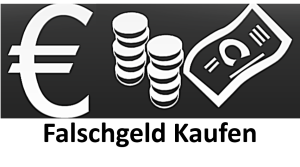
Ervin Espinoza
The Reality of Euro Counterfeit Money: What You Should Know
In an increasingly globalized economy, more people find themselves dealing with foreign currencies, consisting of Euros. With the increase in global trade and tourism, the event of counterfeit money has also surged. This short article explores the complexities surrounding counterfeit Euro currency, providing valuable insights for anyone included in currency exchange or monetary transactions.
Comprehending Euro Counterfeit Money
The euro (EUR) is the official currency of the Eurozone, which makes up 19 of the 27 European Union (EU) member nations. While the euro is a stable and extensively accepted currency, it has not been unsusceptible to forgery. Counterfeit euro notes can be hard to discover without appropriate understanding of the security features incorporated into real currency.
Typical Security Features of Euro Notes
To combat the growing problem of counterfeit currency, the European Central Bank (ECB) has actually executed different security functions in euro notes. These functions include:
Watermark: A portrait of Europa, a figure from Greek mythology, can be seen when the note is held against the light.Hologram: A silver stripe on the front of each expense that shows a moving picture of the number and the sign of the euro.Security Thread: A thin, dark stripe that runs through the note, noticeable when held against the light.Microprinting: Small text that can be seen under a magnifying glass, making it hard to recreate precisely.Color-Shifting Ink: Some denominations feature ink that alters color when seen from various angles.
These security steps are created to help the public quickly validate real banknotes while making it more challenging for counterfeiters to prosper.
The Dangers of Buying Counterfeit Money
While a portion of the population might consider getting counterfeit money as a quick monetary repair, the dangers significantly surpass the perceived advantages. Getting counterfeit currency is prohibited and might lead to severe effects, consisting of:
Criminal Charges: Possessing counterfeit money is a punishable offense in many jurisdictions. Convictions can cause fines, jail time, or both.Financial Loss: Buying counterfeit currency frequently results in loss of funds, as the illegal notes can not be exchanged for real currency.Economic Impact: Counterfeit money undermines the economy and can result in increased inflation and a reduction in currency value.Legal Implications
In Europe, the charges for producing or distributing counterfeit currency are stringent. Under EU legislation, counterfeiting is classified as a major criminal offense. An individual condemned of counterfeiting euro notes can face imprisonment for a number of years, together with heavy fines. Countries within the EU work together to combat counterfeiting, making sure that those responsible are hauled into court.
Alternatives to Counterfeit Currency
Those looking for financial flexibility ought to think about genuine opportunities rather of turning to counterfeit money. Here are some more secure options:
Exchange Services: Utilize reputable currency exchange services to obtain euros legally.Bank Transfers: Transfer funds directly through banks to prevent the risks related to carrying money.Debit/Credit Cards: Most worldwide banks offer cards that allow users to withdraw currency from ATMs worldwide.Digital Currencies: Explore digital wallet services or cryptocurrency options, which can in some cases offer more beneficial currency exchange rate.How to Spot Counterfeit Euro Notes
Awareness is your best defense versus inadvertently accepting counterfeit money. Here are crucial steps to identify possible fakes:
Feel the Texture: Genuine euro notes are printed on a special polymer material, offering them a somewhat rough texture. Counterfeit expenses typically feel different or excessively smooth.Analyze the Watermark: Hold the note up to the light to validate the watermark exists and recognizable.Inspect the Hologram: Tilt the note to see if the hologram shifts images, as it needs to in genuine currency.Inspect the Security Thread: Look for the ingrained security thread, which must be continuous and not just printed on the surface area.Search For Color-Shifting Features: Pay attention to the color of the ink and whether it alters when viewed from numerous angles.Regularly Asked Questions (FAQs)1. What should I do if I receive counterfeit money?
If you get presumed counterfeit currency, contradict it and report the occurrence to local authorities. Do not try to invest or pass it on to somebody else.
2. How can I report counterfeit currency?
You can report counterfeit currency to police or your local bank. In lots of countries, banks have specific protocols for managing thought counterfeit notes.
3. Exist trustworthy methods to evaluate currency credibility?
Yes, numerous counterfeit detection gadgets and apps can help in identifying deceptive currency. Reputable merchants often use these tools to examine bills.
4. Can I get repaid for counterfeit money if I inadvertently accepted it?
For the most part, no. Financial institutions normally do not compensate consumers for counterfeit currency, as it is considered the recipient's duty to validate currency authenticity.
Understanding euro counterfeit money is vital in this age of worldwide finance. Awareness of the security features, legal ramifications, geldfälschung kaufen and methods of verification can assist individuals and businesses safeguard themselves against the threats associated with counterfeit currency. Taking part in legitimate monetary practices fosters financial stability and makes sure the stability of currencies such as the euro. Prevent the attraction of quick gains from counterfeit money and select courses that promote financial security and compliance with the law.
 Italian
Italian
 हिन्दी
हिन्दी
 Arabic
Arabic
 Chinese
Chinese
 English
English
 French
French
 German
German
 Portuguese
Portuguese
 Russian
Russian
 Spanish
Spanish
 Turkish
Turkish


